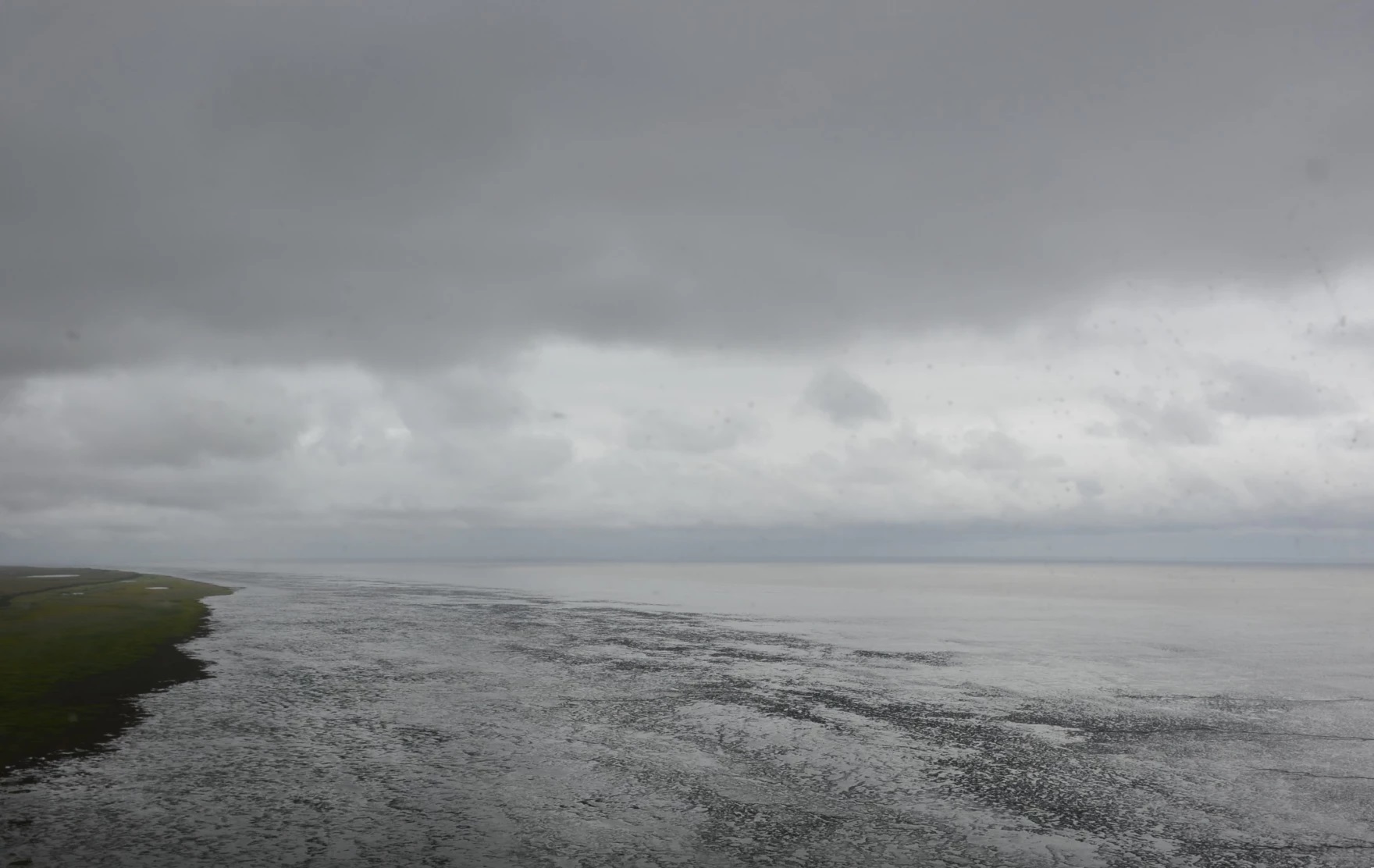
Coastal communities near the mouth of the Kuskokwim River have expressed concern about bottom-trawling vessels operating in close proximity to where salmon enter the river. But trawl industry leaders say that this is nothing new.
In recent weeks, posts widely shared on a popular Facebook group critical of the trawl industry have raised issues with vessels apparently just a few miles offshore. The posts on the STOP Alaskan Trawler Bycatch page featured marine traffic maps showing the location of the trawlers, with one post reading “six trawlers right outside the mouth of Kuskokwim.”
Chris Woodley, executive director of Groundfish Forum, a trawl industry association that represents 17 catcher-processor vessels operating in the Bering Sea and Aleutian Islands regions, testified about the issue before the North Pacific Fishery Management Council during its June 7 meeting in Kodiak.
“Over the past two days, I’ve been hearing concerns coming from stakeholders from the Yukon-Kuskokwim region regarding the presence of trawl vessels fishing southwest of Kuskokwim Bay, and concerns regarding those fisheries’ impacts upon western Alaska salmon,” Woodley said. “This is a public perception issue. What we have been hearing in the past, and this year, is that boats are fishing in the mouth of the river. And that is just simply not true.”
Woodley told the council that the vessels were operating in full compliance with federal regulations and that the maps could be misleading, making vessels appear closer to shore than they actually were.
According to Woodley, the vessels flagged on Facebook were fishing well outside of an established 8.2 million acre conservation zone off-limits to bottom trawling. The zone encompasses the entirety of Kuskokwim Bay and extends to buffer nearby coastal communities.
“In the spring, a limited number of our vessels fish for yellowfin sole in the federal waters, approximately 25 miles southwest of Kipnuk,” Woodley said.
David Bayes, a Homer-based fisheries advocate who also runs a halibut charter company, says that the presence of the conservation area that Woodley referred to doesn’t necessarily ease concerns about threats to Kuskokwim River salmon stocks.
“The thing that people get concerned about is the fish don’t have fences down there,” Bayes said. “So if somebody is dragging right next to the habitat zone, they might not be in it, but the fish theoretically would go back and forth. And it’s not like the fish just stay in one spot.”
Bayes is one of the moderators for STOP Alaskan Trawler Bycatch, the Facebook page where many of the concerns have been posted.
Beyond the direct impact on fish, Bayes also says the ecological damage to the area from trawling can’t be overstated.
“They do have a lot of habitat damage. So all their stuff is hard on the bottom trawl,” Bayes said. “We’ve heard from crews talking about the corals getting mashed down year after year. They used to get big chunks, but now they get smaller and smaller, and now there’s none at all. So you can imagine the habitat side of that.”
According to Woodley, the bottom-trawl vessels operating near the mouth of the Kuskokwim have yet to scoop up a single protected salmon in the area this year.
“In 2024, there have been zero incidental catch of chum salmon and zero incidental catch of chinook salmon in this fishery,” Woodley said. “These bycatch data are confirmed by two federally trained fishery observers on board our vessels, 100% of the time.”
However, the groundfish fleet that Woodley represents is responsible for only a small percentage of Alaska’s salmon bycatch. The vessels are instead responsible for the vast majority of halibut bycatch in Alaska waters, a species which coastal communities like Kipnuk rely on as a food source.
“The rates in this area are much lower than any place else in the Bering Sea. I believe at this point we have, I want to say, 7 metric tons of [halibut] bycatch for the season in this area,” Woodley said.
Following Woodley’s testimony in Kodiak, council member Andy Mezirow asked whether the Groundfish Forum director had any ideas for changing public perception. Woodley didn’t have a direct answer.
“This is becoming a kind of an annual thing, both for the Togiak fishery as well as for this fishery, and we’re just trying to do our best in this process where a lot of these issues are raised and concerns are expressed to communicate what’s going on here,” Woodley said.
Beyond his testimony, Woodley didn’t outline a plan for addressing community concerns about trawling in the Kuskokwim Bay area at the June 7 meeting. Online, public perception appears to remain widely skeptical about the proximity of trawlers to Kuskokwim salmon.




